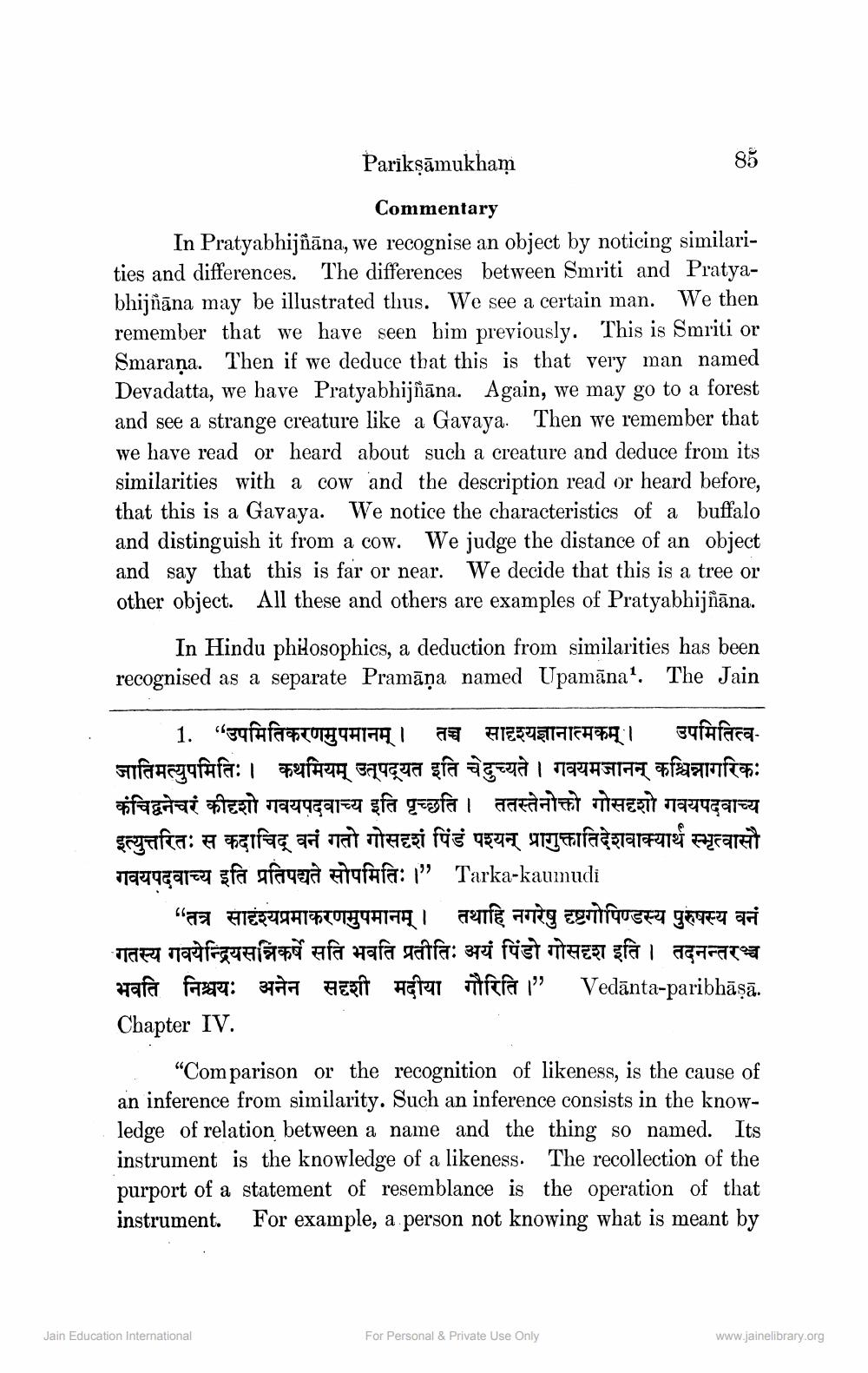________________
Parikṣāmukham
Commentary In Pratyabhijñāna, we recognise an object by noticing similarities and differences. The differences between Smriti and Pratyabhijñāna may be illustrated thus. We see a certain man. We then remember that we have seen bim previously. This is Smriti or Smaraņa. Then if we deduce that this is that very man named Devadatta, we have Pratyabhijñāna. Again, we may go to a forest and see a strange creature like a Gavaya. Then we remember that we have read or heard about such a creature and deduce from its similarities with a cow and the description read or heard before, that this is a Gavaya. We notice the characteristics of a buffalo and distinguish it from a cow. We judge the distance of an object and say that this is far or near. We decide that this is a tree or other object. All these and others are examples of Pratyabhijñāna.
In Hindu philosophics, a deduction from similarities has been recognised as a separate Pramāņa named Upamāna'. The Jain
1. "उपमितिकरणमुपमानम्। तच्च सादृश्यज्ञानात्मकम्। उपमितित्वजातिमत्युपमितिः। कथमियम् उत्पद्यत इति चेदुच्यते । गवयमजानन् कश्चिन्नागरिकः कंचिद्वनेचरं कीदृशो गवयपदवाच्य इति पृच्छति । ततस्तेनोक्तो गोसदृशो गवयपदवाच्य इत्युत्तरितः स कदाचिद् वनं गतो गोसदृशं पिंडं पश्यन् प्रागुक्तातिदेशवाक्यार्थ स्मृत्वासौ Tanygalau gfa afaqa tufafa: 1" Tarka-kaumudi
"तत्र सादृश्यप्रमाकरणमुपमानम् । तथाहि नगरेषु दृष्टगोपिण्डस्य पुरुषस्य वनं गतस्य गवयेन्द्रियसनिकर्षे सति भवति प्रतीतिः अयं पिंडो गोसदृश इति । तदनन्तरञ्च Hafa farsa: 34 AEIT Heta affat i" Vedānta-paribhāṣā. Chapter IV.
"Comparison or the recognition of likeness, is the cause of an inference from similarity. Such an inference consists in the knowledge of relation between a name and the thing so named. Its instrument is the knowledge of a likeness. The recollection of the purport of a statement of resemblance is the operation of that instrument. For example, a person not knowing what is meant by
Jain Education International
For Personal & Private Use Only
www.jainelibrary.org




